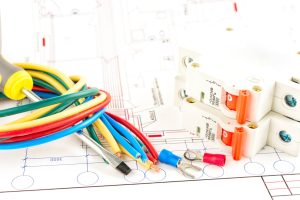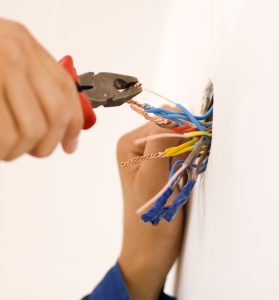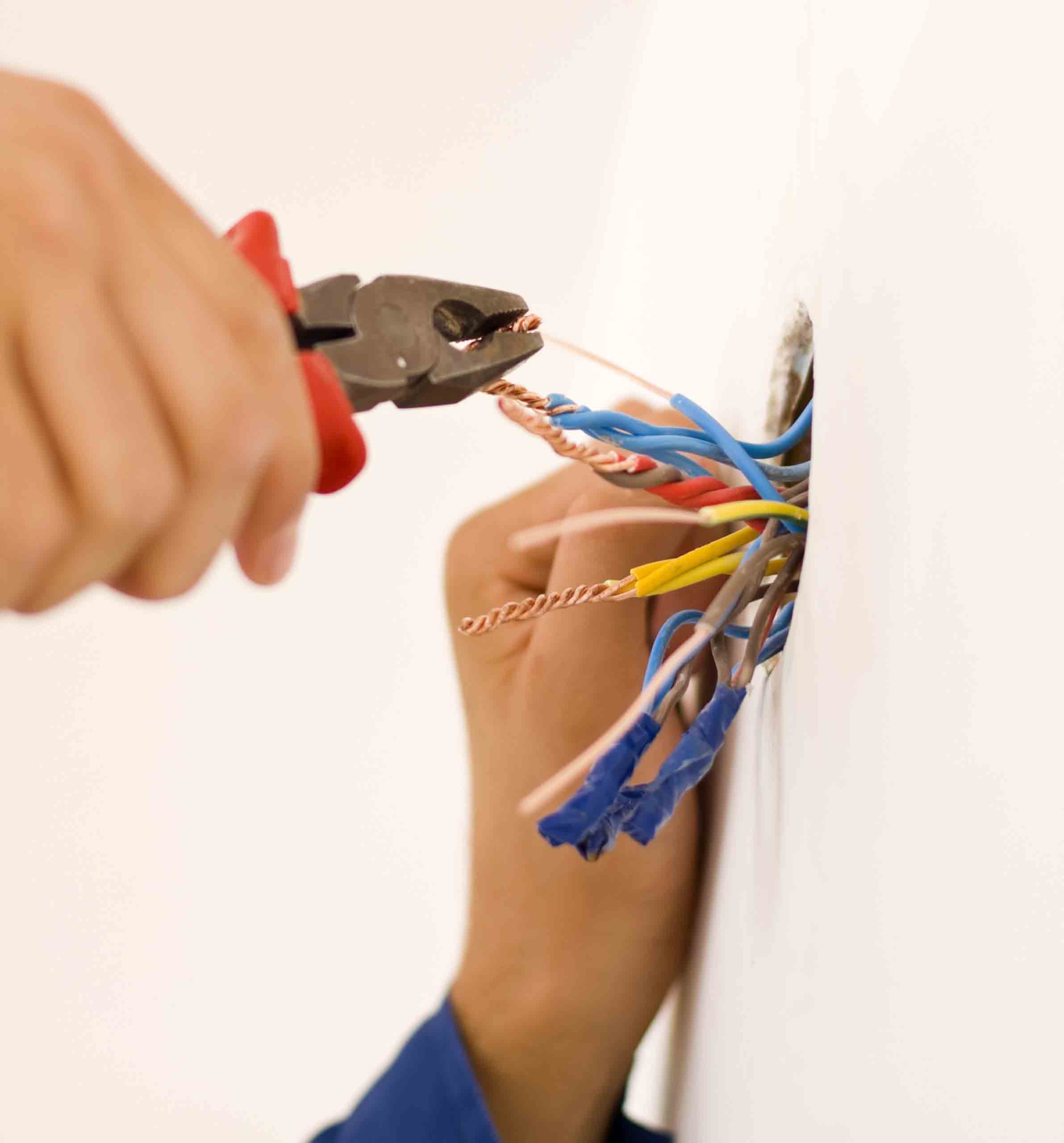Whether you are moving into a different home and want to give your old electrical wiring a good once-over, it’s always wise to routinely inspect your house for poor wiring. Natural wear and tear can lead to your electrical wires’ deterioration or poor workmanship in the past could lead to problems today, putting you and your family at risk.
 Faulty electric wiring can cause short circuits, damage to your expensive appliances, and even an electrical fire. Depending on the damage, bad wiring could even be causing your devices to overheat, work harder, and use more electricity — AKA, raise your electric bill.
Faulty electric wiring can cause short circuits, damage to your expensive appliances, and even an electrical fire. Depending on the damage, bad wiring could even be causing your devices to overheat, work harder, and use more electricity — AKA, raise your electric bill.
A symptom of bad wiring isn’t just a flipped breaker, though that’s often the most common indication of faulty wires … Here are a few other signs your home’s electrical wiring may need to be inspected by a licensed electrician and repaired or replaced:
1. Frequent Short Circuits
Do you find yourself turning on an appliance and that room of your house loses electricity? Short circuits are often caused by overloads of electricity, wherein your electrical panel cannot safely handle the voltage you are asking it to feed through a single breaker and it automatically cuts the current to protect you against electrical fire. While there are many reasons you could be tripping a breaker, it can be a sign of poor wiring.
2. Hot or Discolored Outlets
Electrical outlets should never be hot to the touch or appear discolored. If you notice these symptoms, it could be the beginning of a serious problem. It means that your appliances or the wire behind the outlet face are generating excessive heat. If you see any blackened or discolored markings around the outlet facing or it feels warm against your fingers or hovering your hand around it, it’s time to call an electrician. You can also inspect your electrical appliances for discoloration on the cords or plugs.
Not sure how to check your electrical outlets for faulty wiring? Download our e-book, The Homeowner’s Easy Electrical Toolkit, for step-by-step instructions on how to investigate — and how to know if it’s a job for a professional electrician.
3. Dimming Lights
Lights that dim or flicker when other appliances are switched on can indicate an overloaded circuit or faulty wiring. While it might feel like a fun trick, especially around Halloween, it’s important to get this checked out ASAP. It may not always be an indicator of poor electrical wiring — it could be time for an electrical panel upgrade or even a ballast replacement — but it’s wise to get a professional to be certain.
4. Popping Sounds or Tingling Plug-ins
An outlet that makes an audible “pop” or gives you a pins-and-needles feeling when you plug something in is not a safe outlet. It likely means it’s time to replace the outlet or that there is a problem with your electrical wiring. Call your electrician to get to the bottom of it.
5. Melting Plastic Smell or Smoke
Ever smell a “hot” smell or a melting plastic smell when you flip a switch or plug something in? This is a sure sign of a serious electrical problem, get this checked out ASAP. That means something is burning — like the plastic of your outlet facing or even the protective layer around a frayed write. You don’t want that to turn into an electrical fire; trust us!
6. Frayed Wires
This one seems obvious, but some are guilty of ignoring a frayed wire if it’s still providing electricity or if it’s in an area of the home you don’t often use — for example, your storage room or an attic. Fraying can occur from excessive use, something, like furniture, rubbing against the cord, or damage from an animal chewing on it like your dog or a wild mouse in the house! A frayed wire exposes anything it touches to metal and electricity and is not safe.
Poor Electrical Work is Often To Blame
 Here’s the thing: electricity always wants to find the easy way out. It will inevitably follow the path of least resistance. If the insulation to a wire is faulty or a part of a bare wire mysteriously becomes exposed, allowing it to touch anything conductive (metal light switch housing, nails, or screws, etc.), the electricity will take that shorter path. This could result in anything from minor annoyances like tripped breakers or GFCI switches to more significant issues like electrical shocks, overheated wiring, and, in the worst-case scenario, a house fire.
Here’s the thing: electricity always wants to find the easy way out. It will inevitably follow the path of least resistance. If the insulation to a wire is faulty or a part of a bare wire mysteriously becomes exposed, allowing it to touch anything conductive (metal light switch housing, nails, or screws, etc.), the electricity will take that shorter path. This could result in anything from minor annoyances like tripped breakers or GFCI switches to more significant issues like electrical shocks, overheated wiring, and, in the worst-case scenario, a house fire.
Some of the most likely symptoms of bad wiring jobs include issues like damaged insulation from improper installation (bare wire exposed, nicks in the insulation elsewhere), nail or screw punctures, and, most often, loose or improperly secured connections.
We all want to save some money, but hiring an unlicensed electrician or general “handyman” to do electrical work in your home could leave you in the dark — or worse. Sure, the price may be right, at first, but the risks are far too great.
If you’ve had work done by an unlicensed electrician or handyman and you are experiencing these “bad wiring blues,” SWFL Electric can help. Contact us today for any of your electrical needs.


